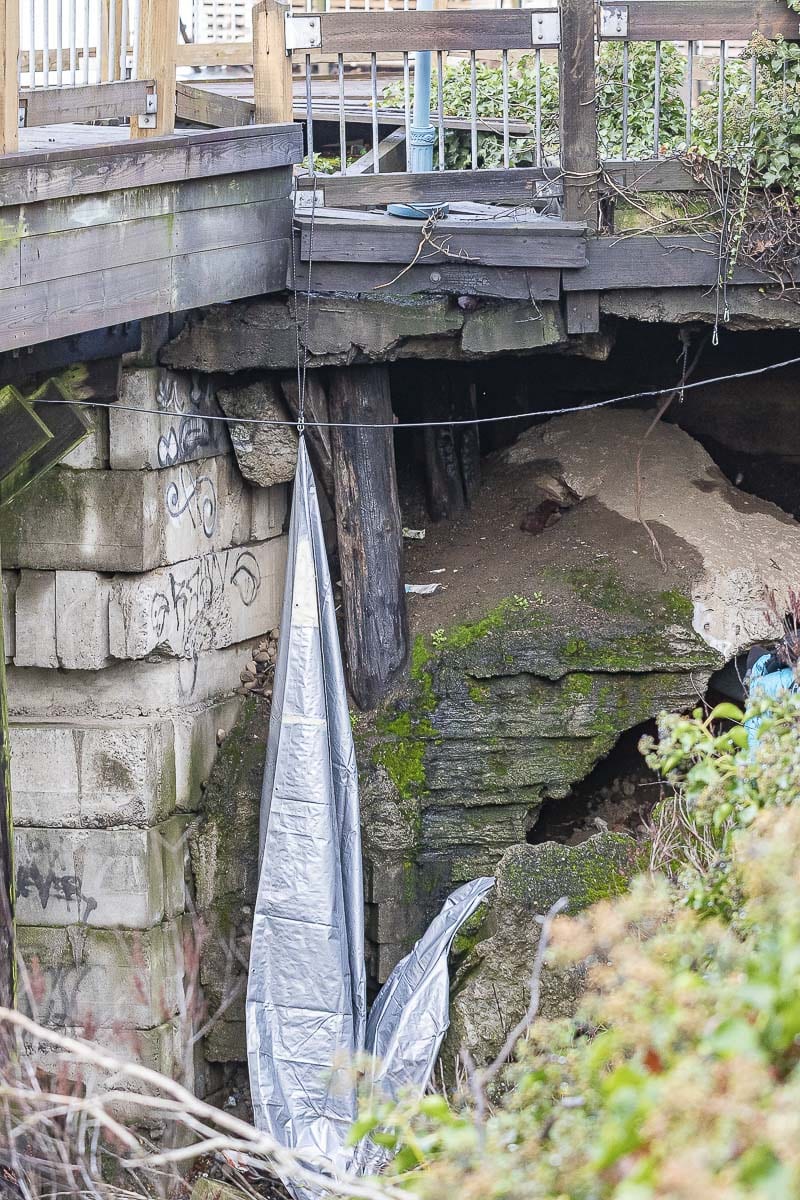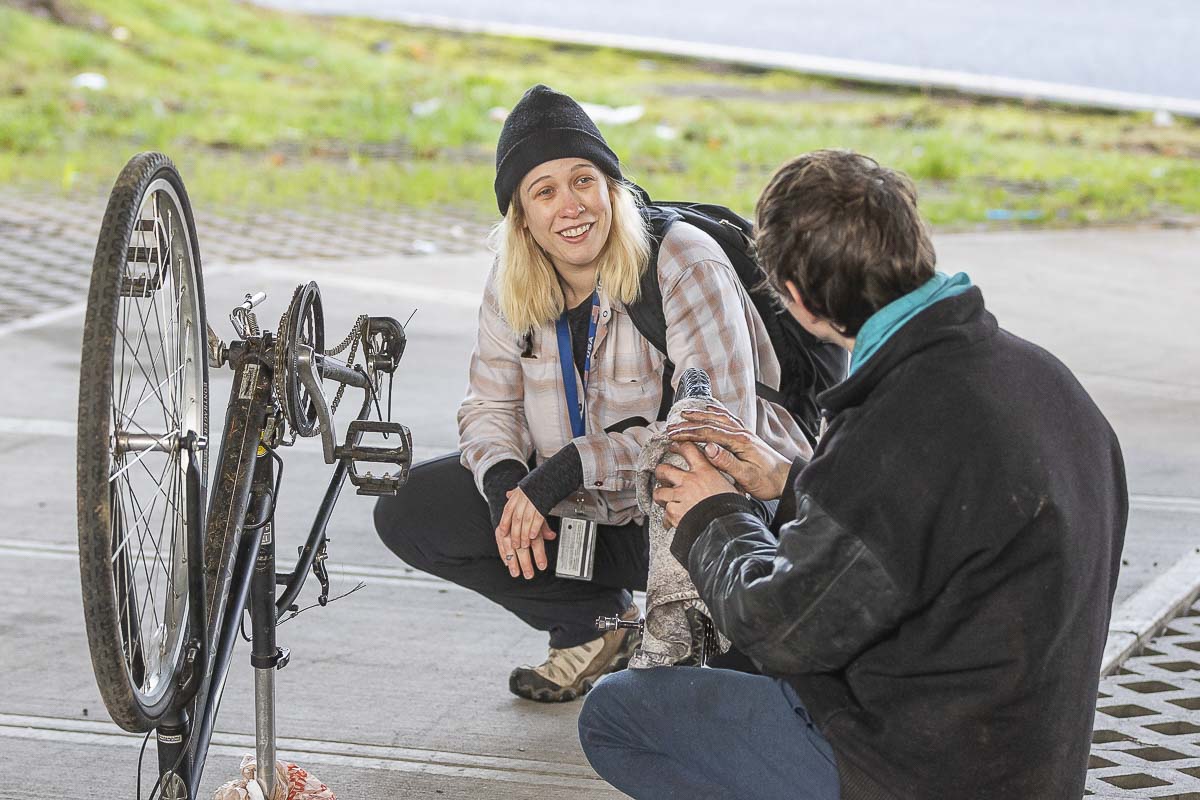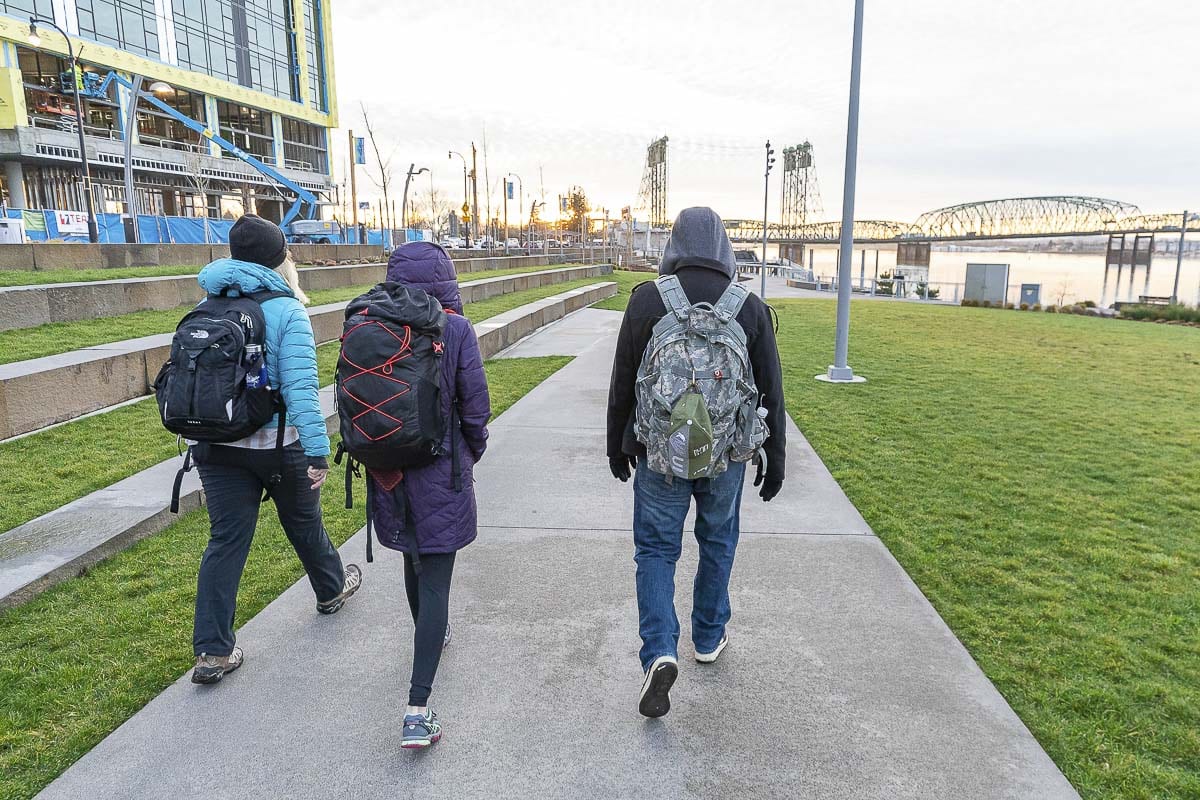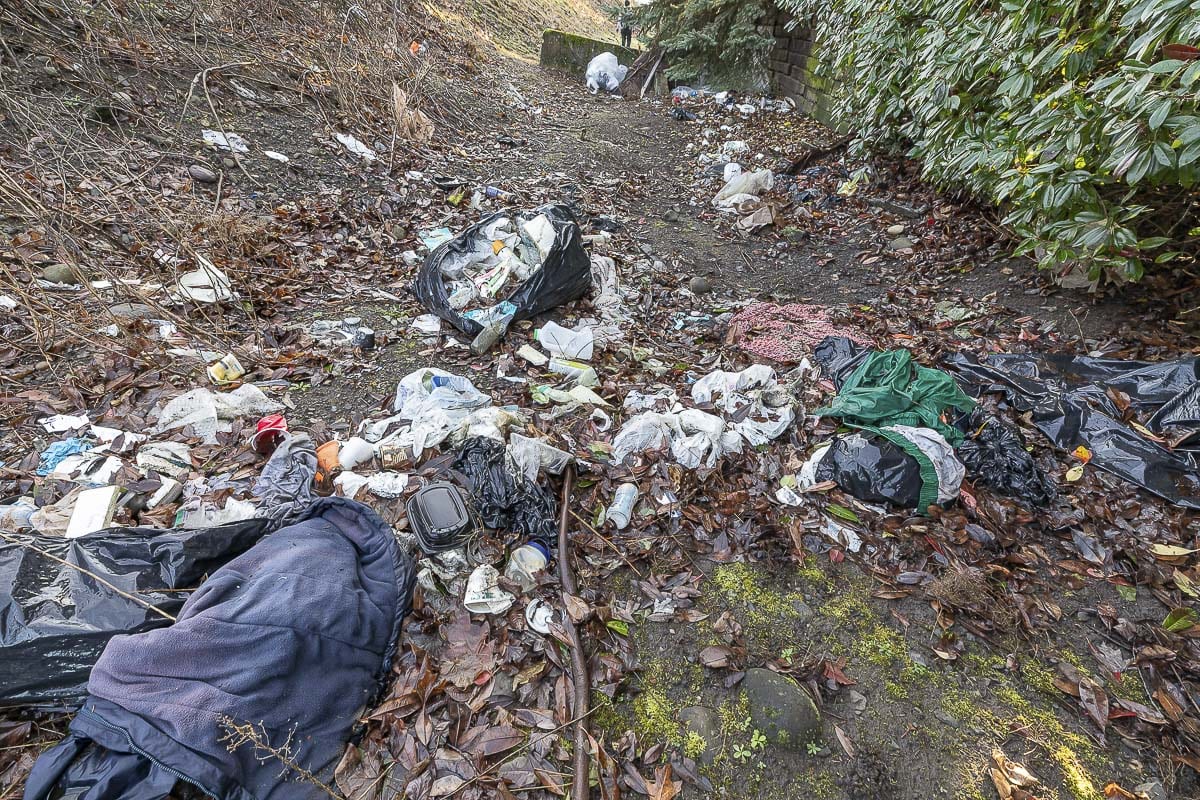The annual survey took place this week on a rare dry morning in Clark County
VANCOUVER — Beside a condemned pier west of Joe’s Crab Shack hangs a gray tarp. Beneath it, a pile of jumbled possessions. A clear sign that, at least sometime in the recent past, a human being called this ramshackle dwelling home.

Descending an embankment, Ashley Gaffney, an outreach case manager for the nonprofit Share, calls out the word “outreach!” several times then, hearing no response, cautiously peeks her head inside.
Empty.
It’s like this at several other locations. Rain-soaked possessions left behind as nomadic homeless populations move across the city of Vancouver.
In the city, it is legal to camp on most public property from 9 p.m. until 6:30 a.m., so most of the volunteers have been out since around 5 a.m.
“We choose early in the morning because we’re trying to catch people who are still sleeping, or have just woken up,” says Gaffney, “before they leave their campsite for the day.”

Gaffney and her two intern volunteers represent three of the 54 people who got up before the sun on Thursday to split into 16 teams and fan out across the county, searching for people living on the margins as part of the annual Homeless Point in Time count.
Dale Whitley, with Council for the Homeless, says they had 39 volunteers and 13 teams last year, so the increased number of people helping out will hopefully lead to more complete data.
The count, done each year in late January since 2005, provides numbers the US Department of Housing and Urban Development uses in allocating grant funding. States also use the information to focus funding, as well as determine where programs meant to curb homelessness are having an impact, and where efforts are falling short.

Last year’s count showed a 21 percent increase from 2018, including 30 percent more people living outside of shelters.
Perhaps most disturbingly, the survey found a 28 percent rise in homelessness among families with children, and a 49 percent rise in veterans experiencing homelessness.
And that count happened on a miserable, rainy morning.
At one camp alongside Columbia Way near the ramp to SR-14, discarded needles and other drug paraphernalia lie scattered amongst blankets, pieces of clothing, and discarded food items. A sign of the all-too-common struggle with drug addiction that many of the chronically homeless individuals face.

Sometimes drug addiction is the reason a person falls into homelessness, says Gaffney, but often it’s a result of someone falling on hard times and finding ways to cope.
“If you’re concerned about your safety, you might use meth to stay awake at night,” she says. “You might use drugs just to get through the day.”
The complicated melange of homelessness includes a severe lack of affordable housing, rising rents, low-wage jobs, opioid dependence, mental health issues, and much, much more.

“The reason why someone became homeless might not be the same reason why they are still homeless,” says Gaffney. And once someone falls into that world, “it’s just much more difficult to do what you need to do to get off the streets.”
Vancouver has begun addressing the issue with their Affordable Housing Fund, a $42 million, seven-year tax levy aimed at creating new affordable housing, providing rental assistance, and increasing the availability of temporary shelter. Their Stronger Vancouver initiative seeks to find additional funding for homeless resources.
The city and Clark County are also exploring the possibility of a joint venture aimed at exploring options for addressing the underlying issues of homelessness. Meetings on how that might take shape are expected to happen in February.

The state legislature is also exploring options to fund shelter space. Gov. Jay Inslee proposed spending $300 million from the state’s rainy day fund on the project, though legislators on both sides of the political aisle have been reluctant to raid emergency funds for the purpose.
Meanwhile, Vancouver is facing new challenges with the impending departure of its new homeless resource manager, Jackie St. Louis, who is stepping down after six months in the newly created position in order to return to his family near Seattle.
After facing criticism in an outside review, Share announced in December that they would step away from being the city’s operator of the Navigation Center’s day shelter. The city will step in temporarily beginning in February as they seek a new operator. Despite some interest, the city had to extend a deadline for proposals to Feb. 19 as they seek more options.
Whatever the Point in Time count reveals in early May, it’s almost sure not to be a remarkable turnaround in the homelessness crisis. If anything, it is likely to illustrate the growing complexity of the issue, and the need for creative solutions to turn the tide.




